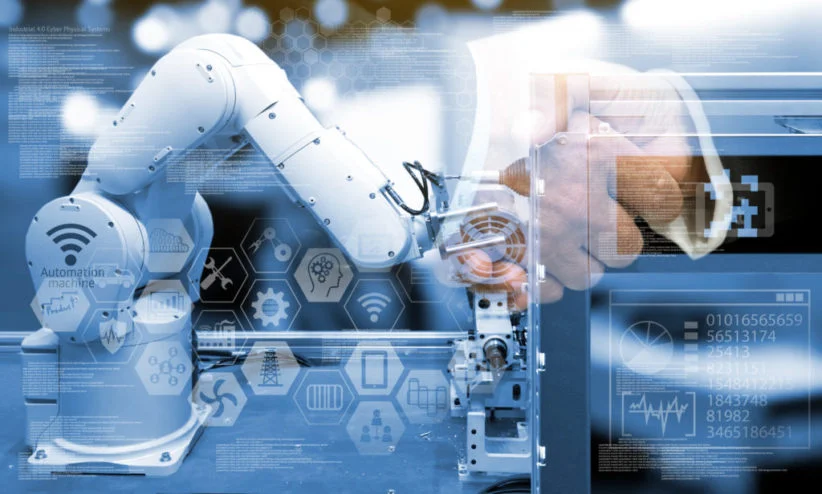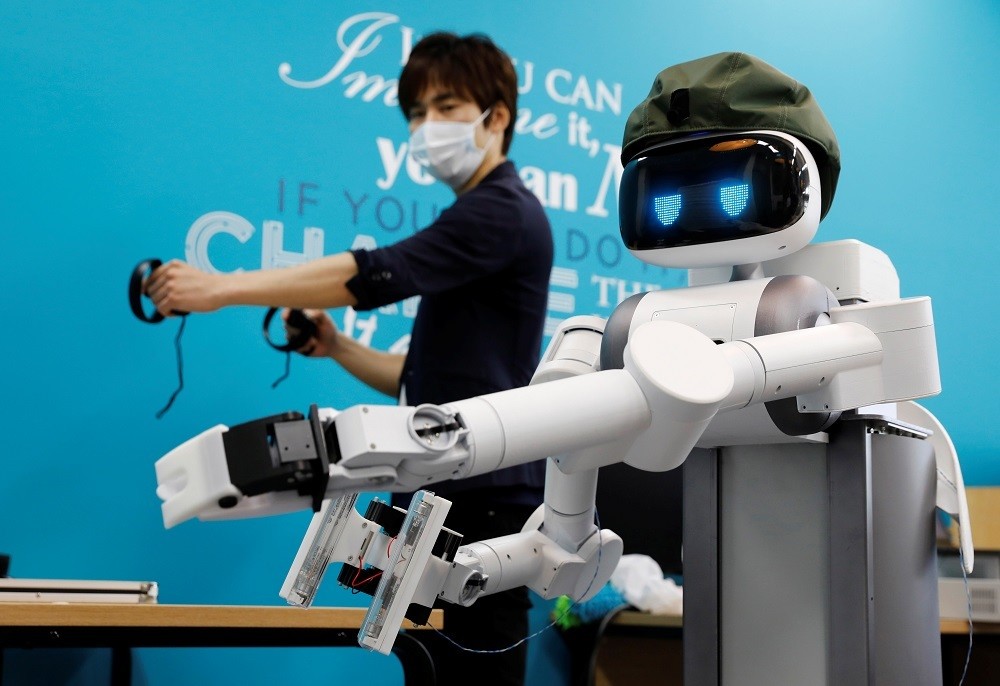One way robots are transforming businesses is through automation. Automation helps streamline processes and reduce time and labor costs while increasing efficiency and accuracy. For example, robots can automate mundane tasks such as counting inventory or filing documents in a fraction of the time it would take human workers.
This helps businesses save money on labor costs and improve productivity. Robots also help companies increase safety and precision in hazardous tasks. For instance, robots can be deployed to inspect dangerous areas that may have been too risky for human workers. They can also handle hazardous manufacturing processes more accurately than their human counterparts.
Finally, robots offer more flexible production capabilities than ever before. With robotic arms and other advanced technologies, businesses can quickly adapt to changing customer demands and produce better and more efficient custom products. Companies can do more in less time, leading to higher profits and better customer experiences.
When looking for robotic solutions for your business, ensure you find a reliable vendor and properly train your staff to use the technology. Doing so will help you make the most of these robotic solutions and unlock the full potential of robotic automation for your business.
The possibilities are endless when it comes to how robotics can transform businesses.
These are the detailed ways robots are transforming business:

Source: industrywired.com
1. Automation
When it comes to automation, robots can help businesses streamline their processes. They can significantly reduce time and labor costs, increase efficiency, and improve accuracy for mundane tasks such as counting inventory or filing documents. Automation will also help businesses save money on labor costs and become more productive.
2. Safety/Precision
Robots are a great way to help businesses increase safety and precision in hazardous tasks. They can inspect dangerous areas that may have been too risky for human workers and handle dangerous manufacturing processes more accurately than their human counterparts.
3. Flexible Production
Robots offer businesses better and more flexible production capabilities than ever before. With robotic arms and other advanced technologies, companies can quickly adapt to changing customer demands and produce better and more efficient custom products. This means businesses can do more in less time, leading to higher profits and better customer experiences.
4. Training
When implementing robotics in your business, finding a reliable vendor and properly training your staff on the technology is important. Doing this will help you make the most of these robotic solutions and unlock their full potential for your business. The training will help ensure that your team is well-equipped to use the robots for automation.
5. Cost Saving
Robots can help businesses save money in the long run by eliminating labor costs. They automate mundane tasks and increase efficiency, allowing companies to do more with less and reduce operational costs.
6. Customer Satisfaction
Robots can also help businesses deliver better customer experiences by providing more efficient and accurate services. This, in turn, leads to increased customer satisfaction, which can ultimately lead to higher profits.
Understanding the Primary Areas of Robotics

Source: weforum.org
These are some of the primary areas of robotics:
Operator interface
Robots are typically operated through an operator interface, which allows you to control the robot’s movements and tasks. This includes programming the robot’s behavior and instructing it to complete certain tasks.
Navigation
Robots require navigation technology to move around their environment safely and accurately. This may include sensors, cameras, and other navigation systems that help the robot move around its environment.
Sensors
Robots rely on various sensors to detect objects, obstacles, and other materials in their environment. This can range from simple infrared light or ultrasound to more complex laser scanning and vision systems.
Artificial Intelligence
Robots need to be able to think and learn, which is why Artificial Intelligence (AI) is important for robotic systems. AI helps robots to make decisions and adapt to changing circumstances in their environment.
Manipulation/ Dexterity

Source: forbes.com
Robots must be able to interact with their environment; this is where manipulation and dexterity come in. Robotics manipulation uses mechanical arms and hands to move objects, while dexterity refers to the robot’s ability to grasp and manipulate objects accurately.
Programming
Robots need to be programmed to operate. Programming includes writing the code that instructs the robot how to behave and respond to its environment. Robotic programming may also include integrating sensors, motors, and other components into the robotic system.
Maintenance
Robots require maintenance to ensure they are functioning correctly. This includes regular checks, cleaning, and repairs to ensure the robot works as efficiently as possible. You must find a reliable robotic maintenance provider to ensure your robots work optimally.
Safety
Robots can be dangerous in the wrong hands, so safety is a top priority when using these machines. You must adhere to all safety protocols and regulations to ensure both human workers and robots remain safe. This includes proper training of staff and regular maintenance checks.
When you work with a reputable vendor, you can ensure your robotic solutions are safe, effective, and reliable. This will help you make the most of these robotic systems and unlock their full potential for your business. These are useful tips when looking for a vendor:
- Check their experience in the industry: When you do a background check on the vendor, you should look for their expertise in the robotics industry. Find out how long they have been working with robotic solutions and if they have any certifications or qualifications related to robotics.
- Ask about training: Ensure the vendor provides comprehensive training for your team. This will help ensure that everyone is well-versed in robotic solutions.
- Get customer references: Ask for customer references from other businesses using the vendor’s services. You can contact these customers and ask about their experiences with the vendor.
- Look at past projects: Ask them to see examples of previous projects they have completed. This will give you an idea of the vendor’s capabilities and how they can help you with your project.
By understanding the primary areas of robotics, you will better understand what to look for in a vendor. This will ensure you get the most out of your robotic solutions and ultimately lead to higher profits.

Source: analyticsinsight.net
Final Remarks
Robotics technology is rapidly evolving, and businesses that take advantage of this technology can reap many benefits. Understanding the primary areas of robotics will help you make the most of these advanced solutions in your business. With the right vendor and proper training, your team can gain valuable insights into how robotics technology can benefit your business and help you automate mundane tasks. This will enable you to deliver better customer experiences, reduce costs, and increase profits.



